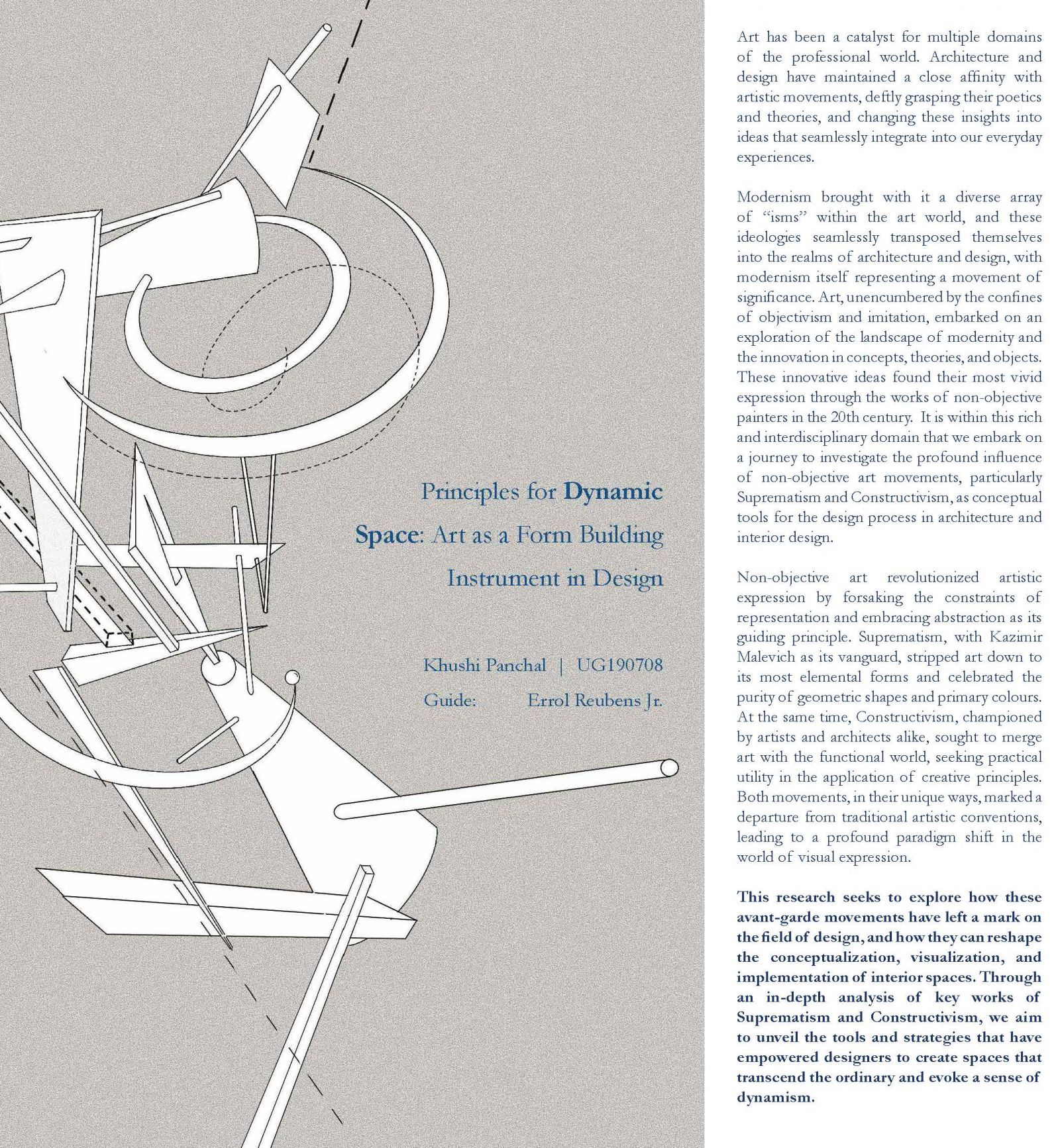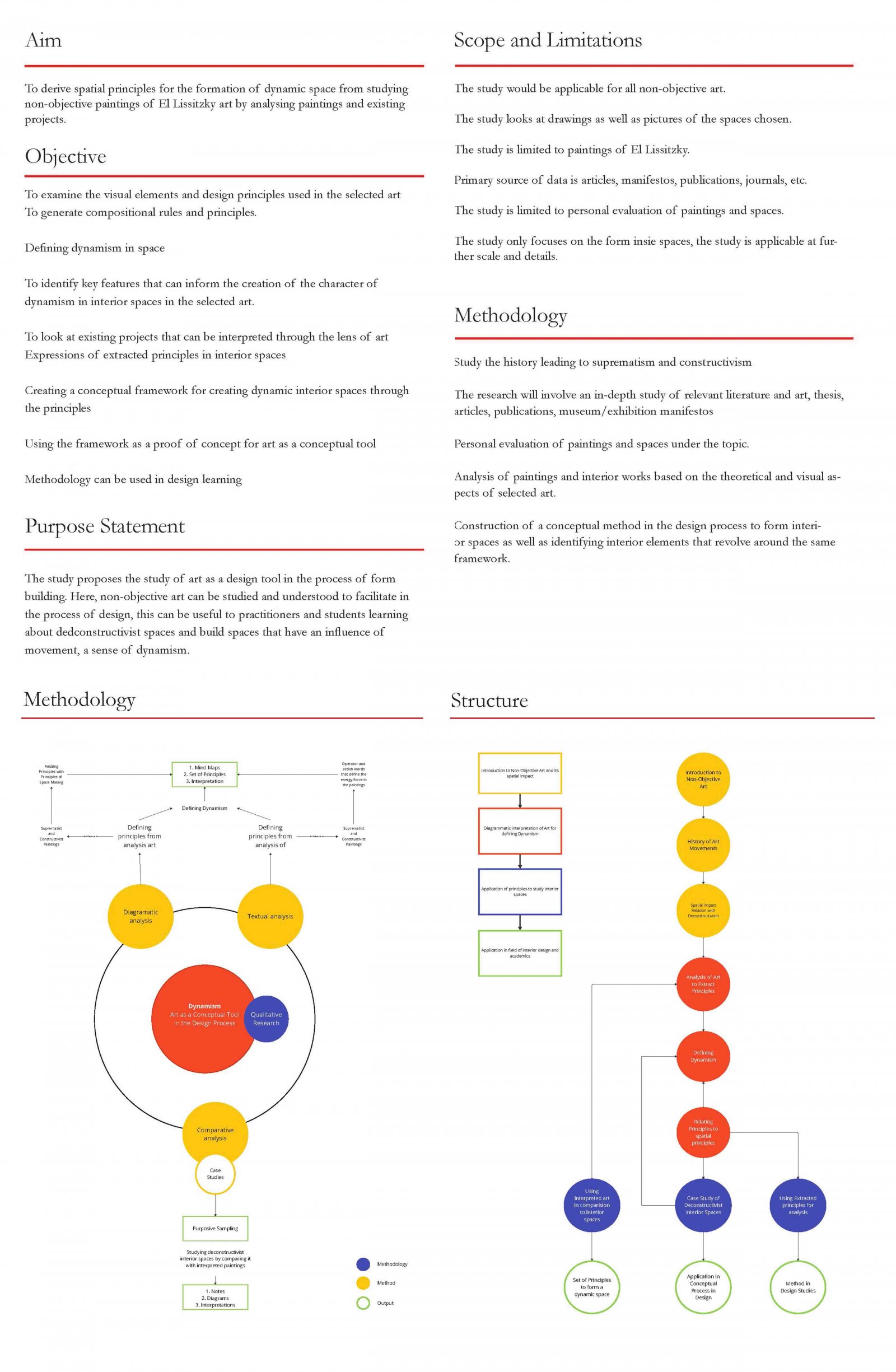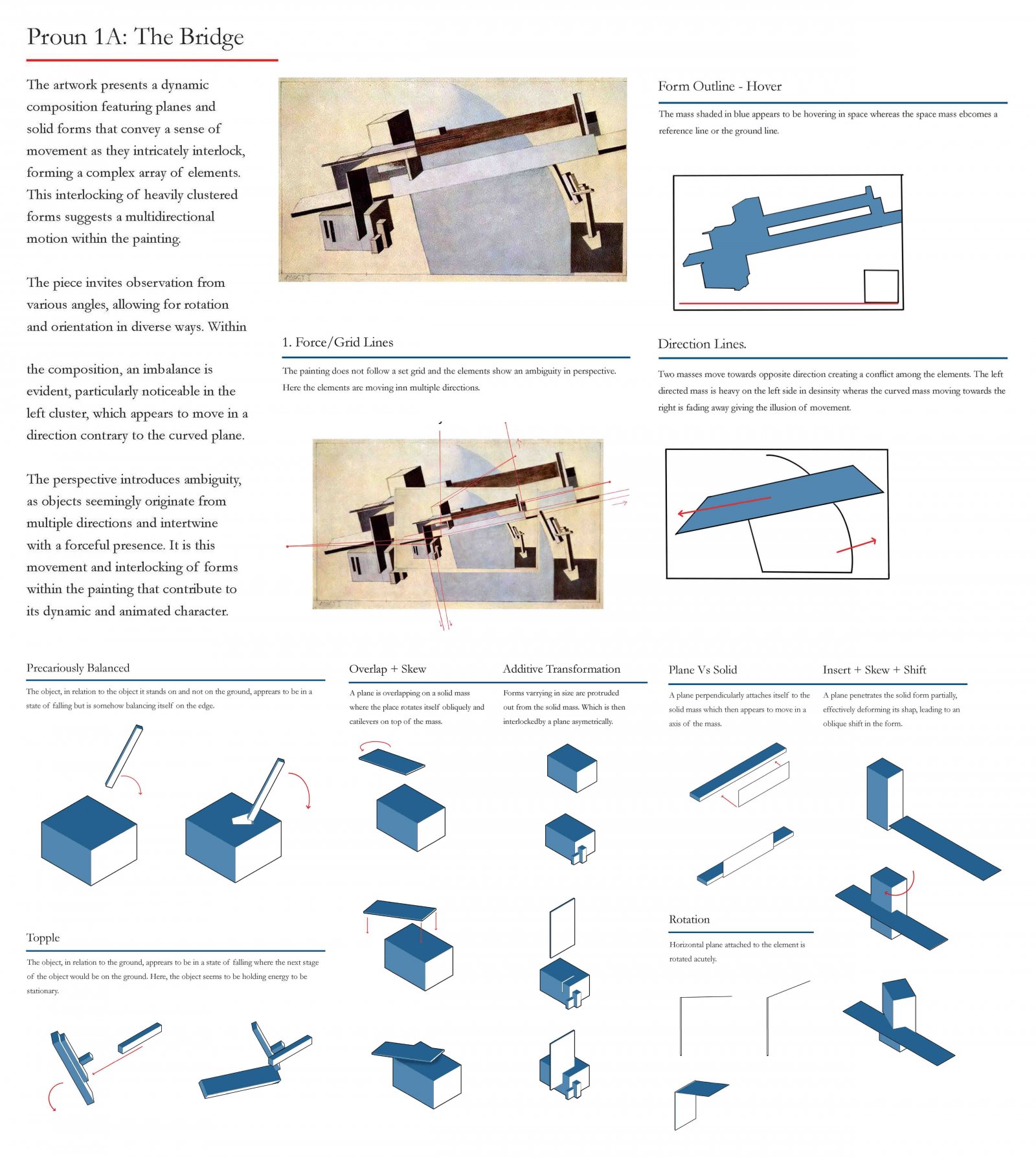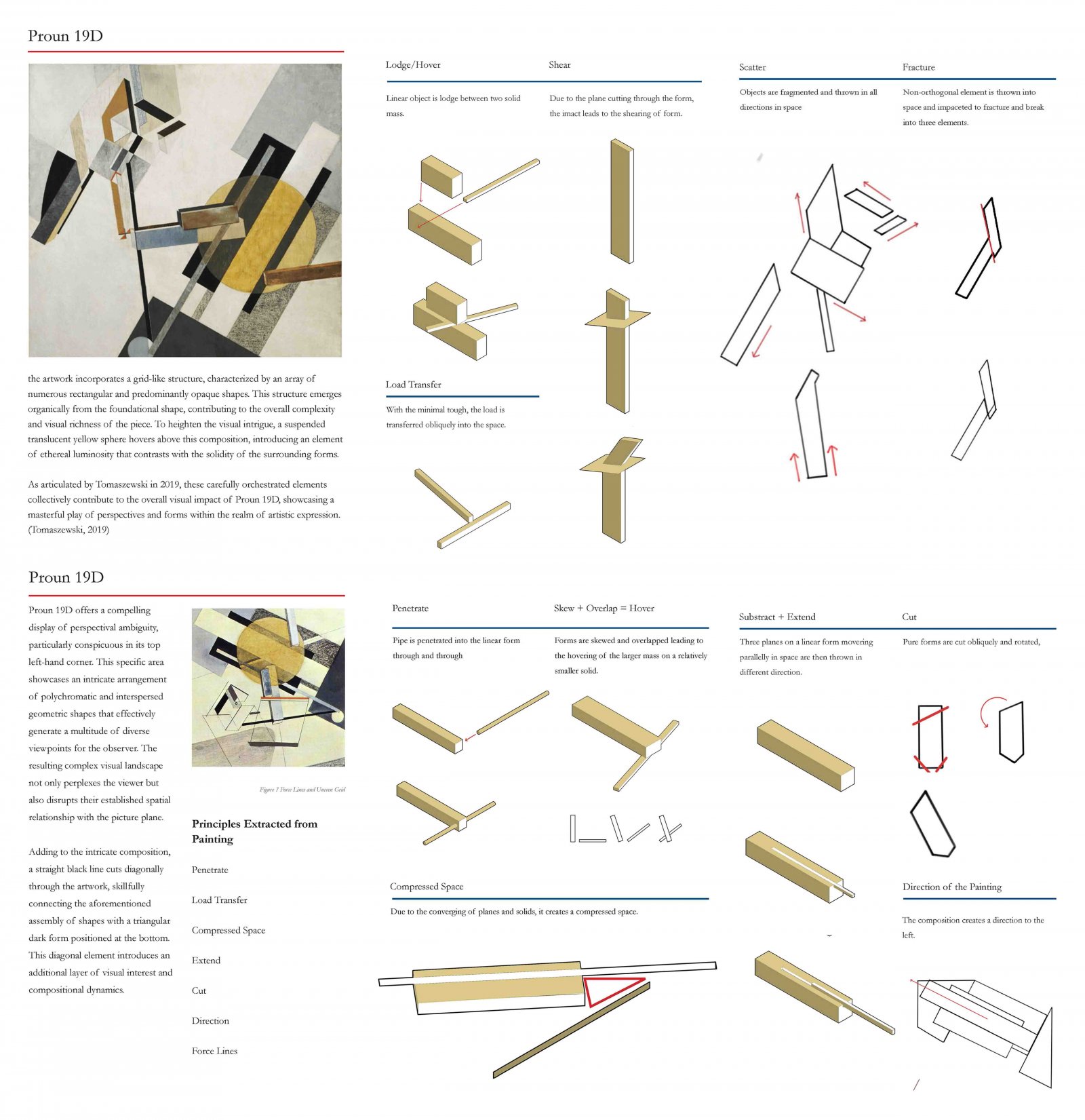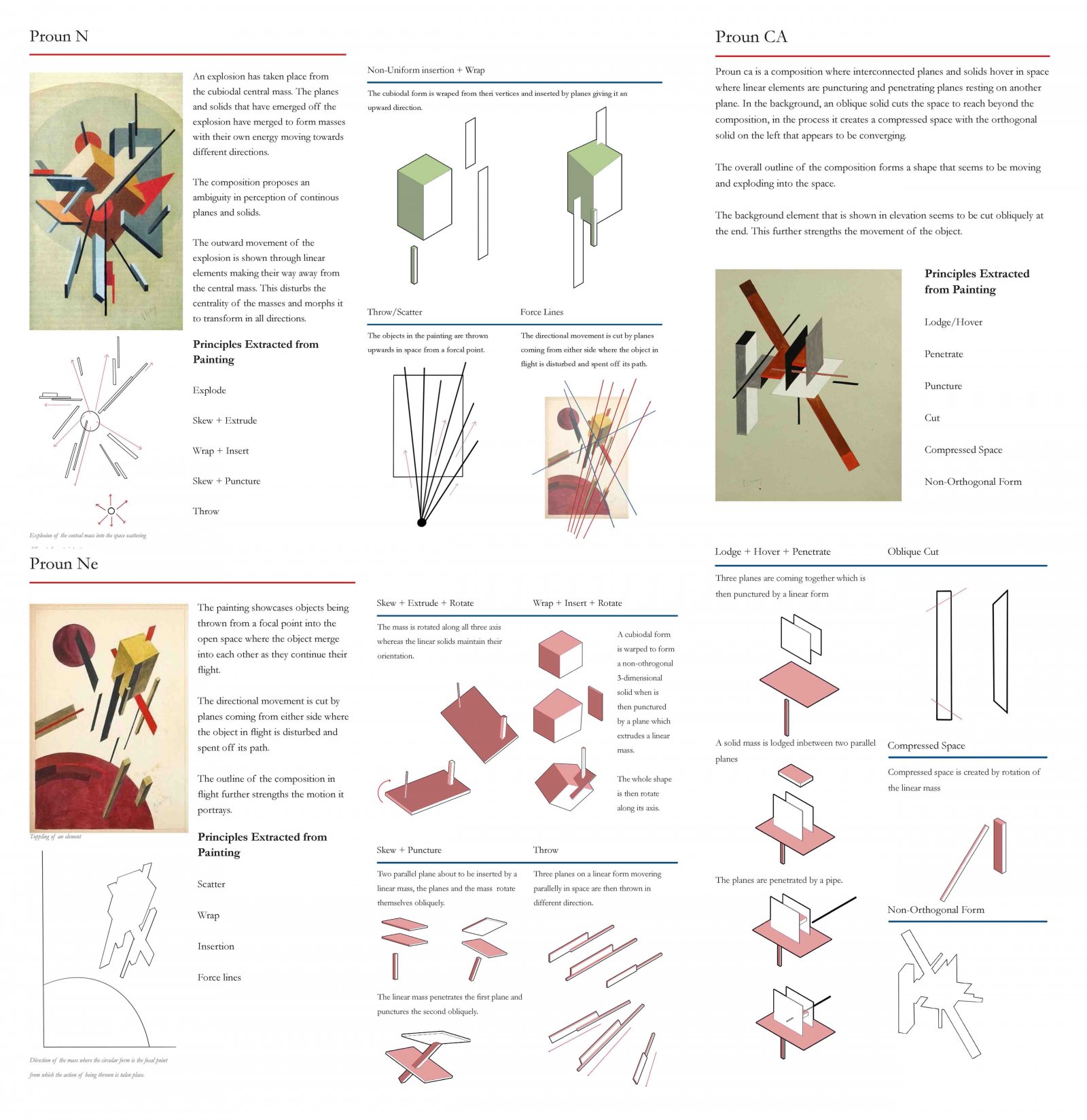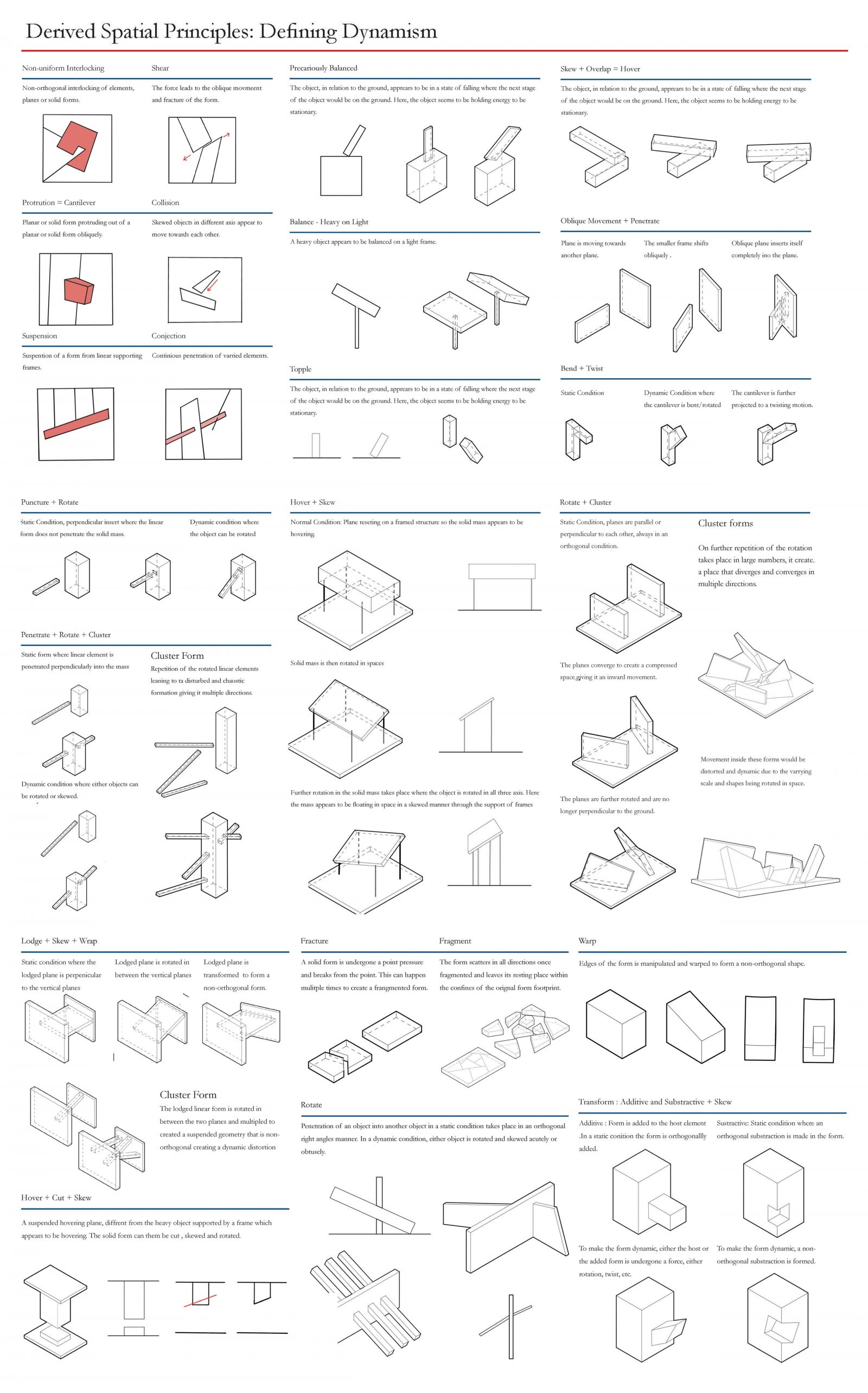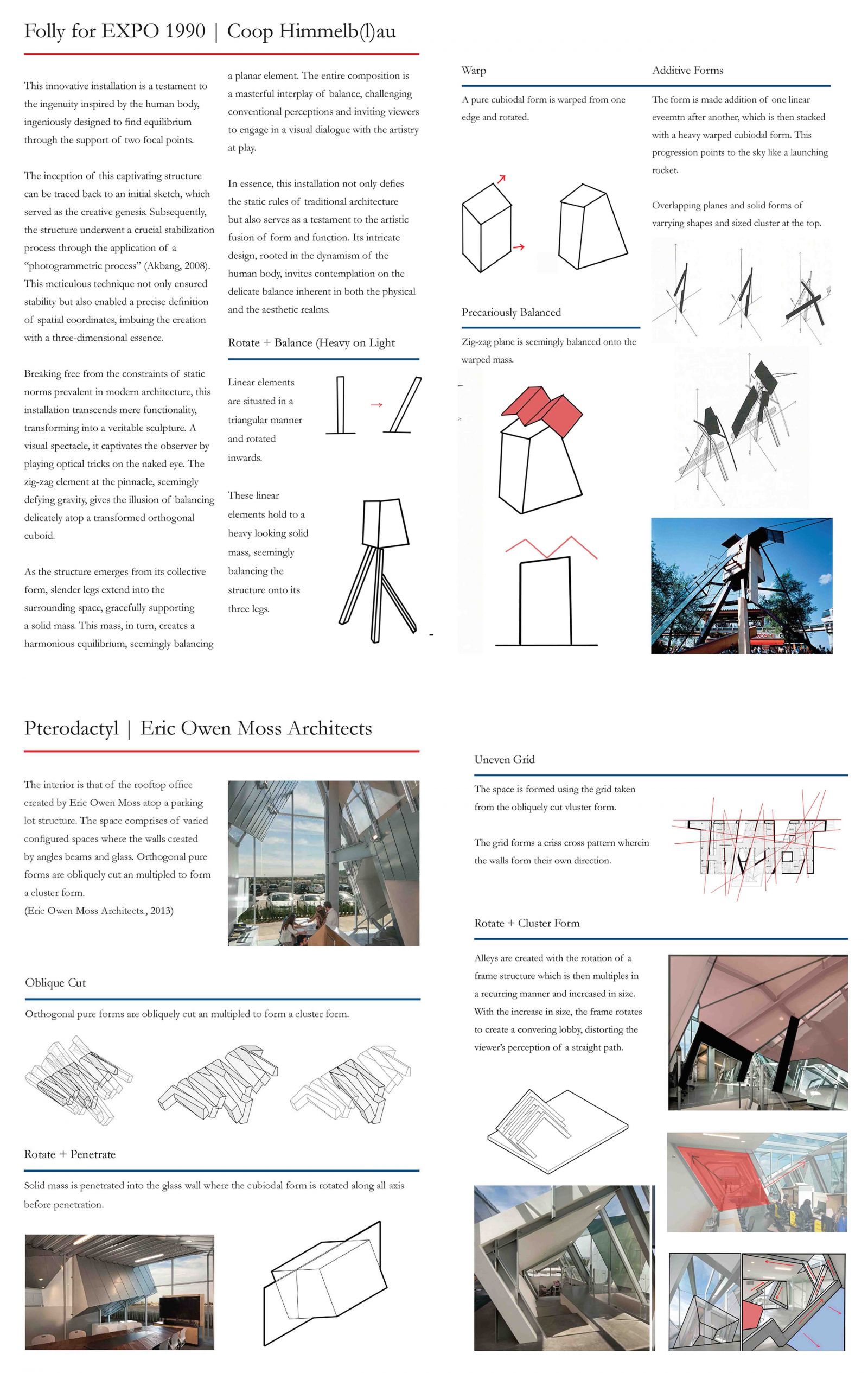Your browser is out-of-date!
For a richer surfing experience on our website, please update your browser. Update my browser now!
For a richer surfing experience on our website, please update your browser. Update my browser now!
Quoting Kazimir Malevich, who articulated, “There is movement and movement. There are movements of small tension, and there is also a movement which our eyes cannot catch, although it can be felt. In art, this state is called a dynamic movement” , the concept of dynamism, as defined by the Oxford Dictionary, is expounded as “the theory that phenomena of matter or mind are due to the action of forces rather than to motion or matter”. This dynamism, initially conceptualized by Malevich within the realm of ' painting, underwent a transformative translation into the domains of architecture and design through the deconstructivist movement. Visionaries such as El Lissitzky, Tatlin, Rodchenko, and others played pivotal roles in transposing the dynamism inherent in paintings into a spatial context, as elucidated by Johnson in 1988.
The research, rooted in the epochs of suprematism and constructivism, places a particular focus on the paintings of El Lissitzky. His exploration of the three-dimensional facets of suprematism and their integration into the constructivist realm transformed paintings into dynamic fields of collision and events, transcending conventional scales and measures. Lissitzky’s innovative concept of “Prouns” bridged the divide between art and architecture. This study systematically correlates the principles derived from Lissitzky’s paintings with deconstructivist spaces, extracting a set of principles that define the formation of dynamic spaces. The personal analysis of Lissitzky’s paintings serves as a foundational source for these principles, aiming to establish a guide for the design process. Comparative examinations of deconstructivist spaces are undertaken as case studies, applying the extracted principles to analyze the forms within these spaces.
The overarching goal of this research is to substantiate the incorporation of non-objective art, particularly Lissitzky’s paintings, in the design process for building forms in interiors. Additionally, the study endeavors to provide a guiding framework for the creation of dynamic forms within interior spaces through a comprehensive set of principles.
